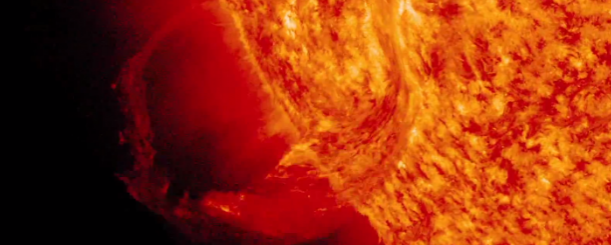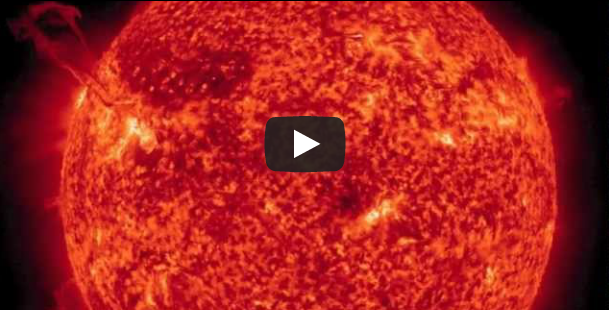An Earth-directed Coronal Mass Ejection (CME) on 31st January 2013 (07:09 UTC) was accompanied by a large prominence eruption best visible in light with a wavelength of 304 angstroms.
NASA’s Solar Dynamics Observatory captured this footage from 10 p.m. January. 30, 2013, to 4 a.m. the next morning. In this video, the imaging cadence is one frame every 36 seconds
The Heliospheric Observatory, show that the CME left the sun at speeds of around 575 miles per second, which is a fairly typical speed for CMEs. Historically, CMEs at this speed are mild.
Not to be confused with a solar flare, a CME is a solar phenomenon that can send solar particles into space and reach Earth one to three days later. Click image to see YouTube video.


